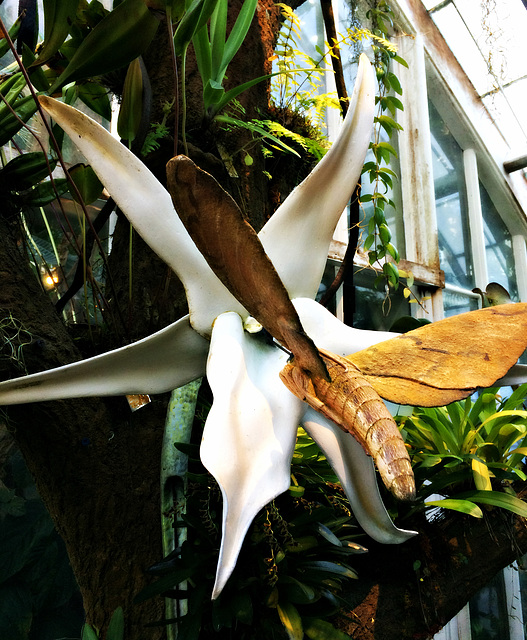Sunset
Kim cương
A street scene
A display
Plumeria
Film One
Touch me not / Mimosa Pudica
Life in Hawaii
Salsa
Flower Conservatory
Flower Conservatory
Flowers / Evolution
Orchid
Crystal lake, San Francisco, CA
View from Water Temple
Water Temple
West Coast style grilled Salmon
Crispy Chicken Katsu
Thai Green curry / Salmon
Starter /Corn chips and Gauk
Pacific Catch
Hawaii images video
Golden Gate Bridge
Magnolia
Untitled
Philosophical Anthropology
Anthurium
Aquatic
Location
See also...
Keywords
Authorizations, license
-
Visible by: Everyone -
All rights reserved
-
152 visits
Orchid and Hawkmoth - of Madagascar - A model


PLEASE WATCH THE VIDEO WHEN THEY FOUND THE MONTH MORE THAN A CENTURY AFTER DARWIN FORECASTED IT!
www.youtube.com/watch?v=Q8GdkMBluis
www.youtube.com/watch?v=Q8GdkMBluis
Jean has particularly liked this photo
- Keyboard shortcuts:
Jump to top
RSS feed- Latest comments - Subscribe to the comment feeds of this photo
- ipernity © 2007-2024
- Help & Contact
|
Club news
|
About ipernity
|
History |
ipernity Club & Prices |
Guide of good conduct
Donate | Group guidelines | Privacy policy | Terms of use | Statutes | In memoria -
Facebook
Twitter

Pollination is a key part of the life cycle of flowering plants – pollen must get from one plant to another in order to fertilise the ova, but being unable to move makes the whole job rather tricky. Some plants rely on the wind and simply produce masses of pollen in the expectation that some will blow onto the right flower eventually.
Others, including orchids, take a more direct route – luring insects to them with deceptive signals or rewards of nectar and then dumping pollen on them. If the insect (or indeed bird, bat or other carrier) visits another flower of the same species shortly afterwards, the pollen will be delivered. Some species of plants and insect evolve complex relationships where both can benefit – if the insect is the only one that can access the nectar it is guaranteed food others are denied, while the flower further reduces the risk of misdelivered pollen and can cut back on its investments.
The beautiful flowers of the orchid A. sesquipedale with the long, green nectaries hanging behind them. Photograph: Ardetti et al, 2012
One way of restricting access to nectar is to elongate the part of the flower that holds this sugary liquid, ensuring that only the longest-tongued of insects can reach it. Orchids can take this to extremes and it was one such flower that led to the creation of a famous hypothesis by the most famous biologist. Back in early 1862, a British orchid grower sent Charles Darwin a series of orchids from Madagascar, which included the beautiful and star-shaped flower of Angraecum sesquipedale. This has an exceptionally long nectary (getting on for 30 cm) and in a book on orchid pollination, Darwin suggested that this extreme feature may have evolved alongside a moth with an exceptionally long tongue to pollinate it.
He wrote to a friend at Kew "I have just received such a Box full from Mr Bateman with the astounding Angraecum sesquipedalia [sic] with a nectary a foot long. Good Heavens what insect can suck it", and in a second letter just a few days later suggested "in Madagascar there must be moths with probosces capable of extension to a length of between ten and eleven inches [25.4–27.9cm]". Here was a firm prediction and one that has become famous in evolutionary circles, but hard to confirm.
While we now recognise the idea of such co-evolution to be common and well known (and indeed, the pollinator-flower interactions are a great example of this), it was at the time a novel suggestion. More specifically it was also a new prediction – although other related orchids were known to be a food source for hawkmoth species, none with such a prodigious tongue needed to deal with A. sesquipedale was known in Madagascar.
Darwin was postulating the existence of an otherwise unknown species of insect based purely on the size of the flower and his understanding of the evolution and ecology or orchids and insects. As it happens a candidate moth had been catalogued from the Congo region of Africa in the 1830s (Xanthopan morganii), but that is some distance from Madagascar and Darwin can hardly have known about it at the time.
In 1907, more than 20 years after Darwin's death, a subspecies of the gigantic Congo moth from Madagascar was identified and named as X. morganii praedicta apparently fulfilling Darwin's prediction (the name indicating that it was predicted, though actually in the paper naming the moth Darwin wasn't mentioned). The moth is large at around 16cm in wingspan, but the proboscis is truly colossal and can be more than 20cm in length forming a huge coil in front of the head when not in use. However, while there was now an orchid with a long nectary and a moth with a huge tongue, the question remained: did X. morganii praedicta really feed on A. sesquipedale?
It wasn't until 1992, nearly a century later, that observations were made of the moth feeding on the flower and transferring pollen from plant to plant with both videos and stills being taken. This was observed in the wild and confirmed further with studies in captivity.
Thus more than 130 years after Darwin first suggested that a large moth pollinated an African orchid, his hypothesis was confirmed. It took quite some time, but quite clearly Darwin's prediction, based on extremely limited evidence but bolstered by his understanding of his own new theory of natural selection, was correct.
academic.oup.com/ae/article-abstract/37/4/206/2474343?redirectedFrom=PDF
Sign-in to write a comment.